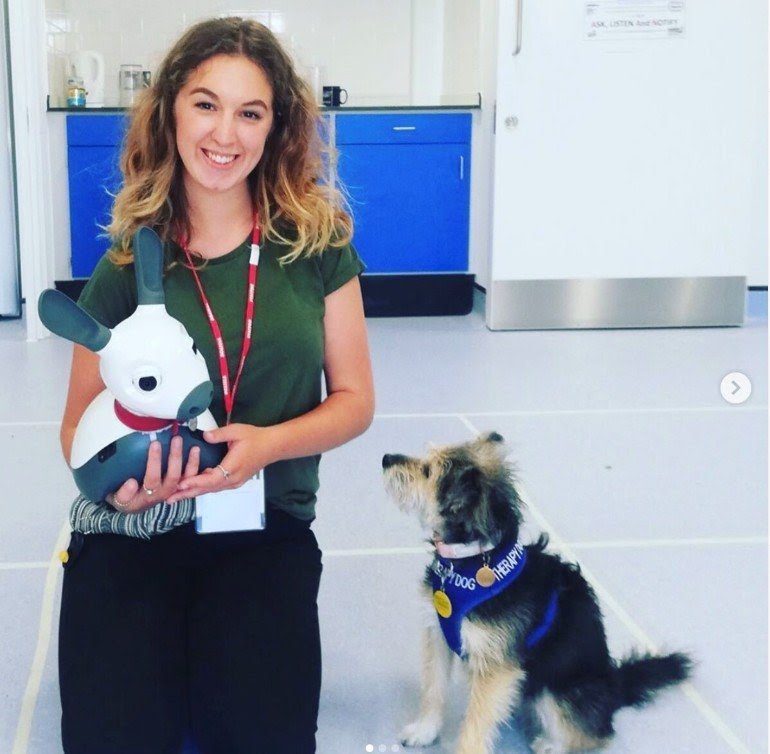In some cases, biomimetic robot dogs are as effective as therapy dogs.
In pet therapy, robotic animals could be the "perfect" replacement for our real-life furry friends, a new study published today found. from the University of Portsmouth.
Animals, especially dogs, can have therapeutic benefits for children and young people. A new article, published in the International Journal of Social Robotics, discovered that the robotic animal “MiRo-E” can be equally effective and represent an excellent alternative.
Robotic pet therapy
Dr. Leanne Proops from the Department of Psychology, who oversaw the study, said: “We know that real dogs can provide relaxing and pleasant interactions for children, increasing their feelings of well-being, improving motivation and reducing stress. This preliminary study found that biomimetic robots (robots that mimic animal behaviors) may be a suitable replacement in certain situations. And in some cases there are even some advantages to using them on a real dog.”
The drawbacks of a hairy in the flesh
Dogs are the most commonly used pets for pet therapy due to their learning abilities and sociable nature. However, there are several concerns regarding their use in an environment with children. They are linked to the risk of allergies or diseases, and for some they represent a cause of fear and discomfort.
Olivia Barber, first author of the article and herself a pet therapy dog owner, said: “Although many people in schools and hospitals benefit greatly from receiving visits from a therapy dog, we need to be aware of the pros and cons. Visits can be stressful and incredibly tiring for therapy dogs, which means we should figure out whether using a robotic animal isn't feasible.”
The positive aspects of a robot for pet therapy
First of all, the physical limits: the robots they can be cleaned thoroughly and operate for longer periods of time. The most recent ones are also realistic, reflecting the movements and behavior of a real animal. They wag their tails to show excitement, express "emotions" through sounds and colors, turn their ears towards sounds and if necessary, fall asleep.

The research
The researchers used pet therapy dogs and a biomimetic robot at a school to interact with 34 children aged 11 to 12.
The two pet therapy dogs were a three-year-old Jack Russell cross with a poodle and a 12-year-old Labrador retriever from the Pets as Therapy charity. The robot was a MiRo-E biomimetic robot developed by Consequential Robotics.
The children were asked to complete a questionnaire about their beliefs and attitudes towards dogs and robots, before taking part in two separate free play sessions, one with a real dog and one with a robot.
The results
The researchers found that the children spent a similar amount of time stroking both the dog in real life and the robot, but spent more time interacting with the robot.
Although the children reported significantly preferring the session with the real dog, overall enjoyment was high and they actually expressed more positive emotions after interacting with the robot.
The more the children attributed mental states and sensitivity to the robotic dog, the more they enjoyed the sessions.
Dr Proops said: “This is a small-scale study. However, the results show that interactive robotic animals could be used as a good alternative in pet therapy."


